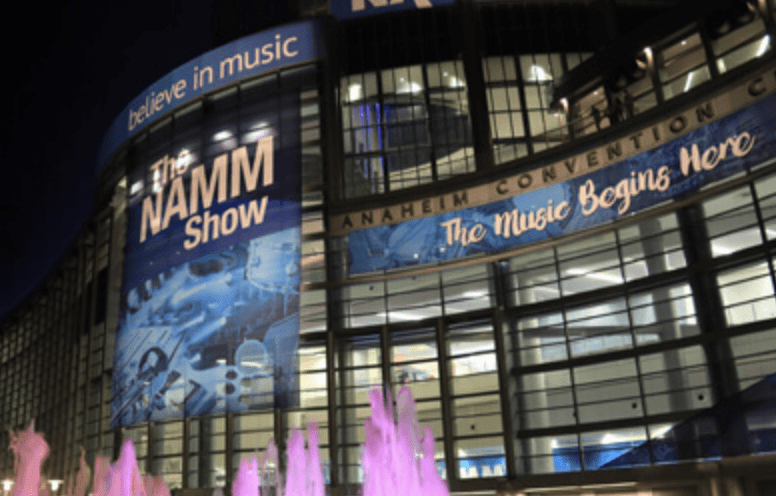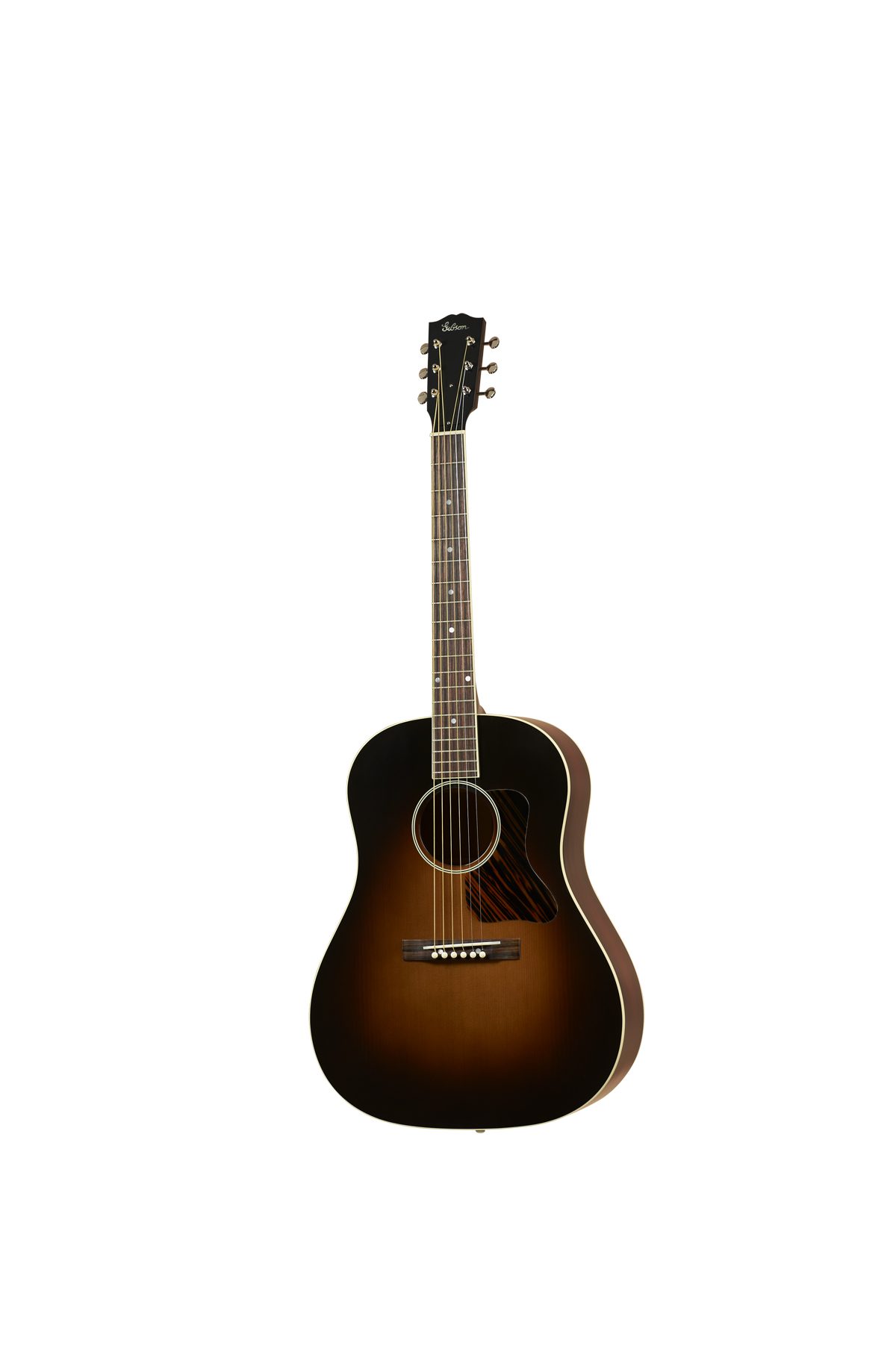 It’s very frustrating because we seem to be stuck in a time warp when it comes to guitars,” Hartley Peavey said to me, as we both stood in the brand-new showroom at Gruhn Guitars in Nashville on the day before the NAMM Show. “A lot of people are convinced that the best guitars that will ever exist were invented back in the early 1950s. They believe that the guitars made back then were better than the ones that are made today, and that’s just not true. Look, you could get a better, modern guitar at a fraction of the cost. That’s just a fact.”
It’s very frustrating because we seem to be stuck in a time warp when it comes to guitars,” Hartley Peavey said to me, as we both stood in the brand-new showroom at Gruhn Guitars in Nashville on the day before the NAMM Show. “A lot of people are convinced that the best guitars that will ever exist were invented back in the early 1950s. They believe that the guitars made back then were better than the ones that are made today, and that’s just not true. Look, you could get a better, modern guitar at a fraction of the cost. That’s just a fact.”
Perhaps an odd venue – one of the world’s most storied vintage guitar outlets – in which to discuss how and why older guitars are, in many ways, inferior to instruments made with modern techniques, but it’s a fascinating topic.
Whether you, personally, favor the guitars or amps that Mr. Peavey’s company offers, there’s no argument that the guy knows his stuff. And he’s hardly the only voice out there pointing to verifiably improved techniques and materials that can be used in the design and manufacture of instruments and related gear today.
And yet amongst many – arguably most – musicians, there’s a stubbornly held belief that “They don’t make ’em like they used to.” Of course, that’s exactly Peavey’s (and others’) point: they don’t make them like they used to – they make them better now.
While similar observations could be made across almost the entire MI spectrum, I’m going to keep the focus on guitars since: 1) It was my conversation with Hartley Peavey about guitars that served as the catalyst for this train of thought; 2) there’s some relevant content in this issue of MMR; and 3) I’m a guitarist and it’s fun for me to babble, stream-of-conscious style, about guitars.
In Matt Parish’s excellent piece on guitar suppliers making use of alternative materials (page 24), Rick Nelson of Flaxwood Guitars postulates that, “I think the next generation of people coming into the marketplace is not going to have the same preconceived prejudices or opinions that past generations have had. They’re much more receptive to changes in technology.”
Rick may be right – time will tell – but if history is any indication, he and any guitar maker aiming to lure traditionalists away from the tried-and-true are likely in for a hard and long-fought battle.
To wit: in recent years, Gibson has taken some heat – at least amongst so-called traditionalists – for their more adventurous, high-tech models, such as the “Robot” guitars and the Firebird-X.
In a 2012 interview with UK-based musicradar.com, Gibson CEO Henry Juszkiewicz responded to the resistance such “innovative” models receive: “It takes a while for people to understand new technology. We’ve given them very powerful new tools that will take some time to digest… If you just look at the Les Paul; it was introduced in ‘52. Well, it didn’t sell in any real numbers until 1965!”
Time will tell if, come 2026, rockers everywhere will be embracing the Firebird-X, but speaking as someone who frequently shops at guitar stores and browses the web for deals and who hasn’t seen a single Firebird-X in the past year… I have my doubts that it will become “the new Les Paul.”
And the thing is: I am the problem. I respect and admire the hell out of Hartley Peavey and I can’t begin to argue with him that the tolerances on windings in ‘50s-era pickups were as accurate as those made today. I can’t argue that the hand-made Fender guitars from 40 or more years ago weren’t naturally bound to be less consistent (and consequently occasionally resulted in a clunker) than guitars made using more precise building methods today. I can’t argue that traditional tonewoods are becoming more scarce and expensive and that alternative materials need to be embraced.
So why do I want – really want – the 1963 Firebird V I saw hanging on the walls at Gruhn Guitars (only $15,000) more than any new guitar out there? Certainly more than one made with some weird epoxy composite hoo-ha or one that has “robot” tuners or that I can plug into my iPod or which has a display that can show me the proper fingering for a Cm7(b5)?
Am I brainwashed? Just plain stupid?
It could be legitimately argued that I am brainwashed (it could be argued that I’m just plain stupid, as well…). I want that Gibson Firebird because of what and whom I associate it with. I can (and do!) know tons about technological advances and environmentally sound alternatives, but damnit: I saw black & white footage of Brian Jones playing a ’60s Gibson Firebird when I was 14 and I want that guitar.
All is not lost for those advocating for advances in guitar design, though. Continuing to use my own tastes as an illustration, when I was younger I also coveted (and ultimately purchased) a Dan Armstrong – not exactly a “traditional” fuddy-duddy guitar. Sure, by 2013 standards it’s not necessarily “space age,” but: Lucite body, slide-out interchangeable pickups, machine-pulled fretwire – this was not just another Gibson or Fender clone. Why did I love the Dan Armstrong and want to buy one? Because I saw that Keith Richards and Joe Perry played Dans. They’re amongst my heroes, I want to be like them, I buy their guitar. Pretty simple.
I’m not saying every young guitarist is as I was. It’s likely many have their own hero-worship down to a more manageable (and less fiscally damaging) level. But whether a player lusts after a particular instrument because his or her idols play one, because they like the look, or for whatever other reason, the point is: that interest is internal and real. It’s not dictated by the sound logic and well-explained points put forth by the CEO of a guitar company or a respected luthier or a magazine.
As Ian Hanna of the Forest Stewardship Council is quoted as saying (again in Matt Parish’s article in this issue): “The most efficient driver of change is buyer preference.”
I have no easy or obvious solution as to how to get folks to think outside of the proverbial box and not just “accept,” but to want new ideas and materials when it comes to their musical instruments. I am convinced that the road to changed buyer preference won’t be crossed via press releases or exasperated industry commentary, though.


























Looking Back on 2025: A Year of Controlled Chaos (Emphasis on “Controlled”)